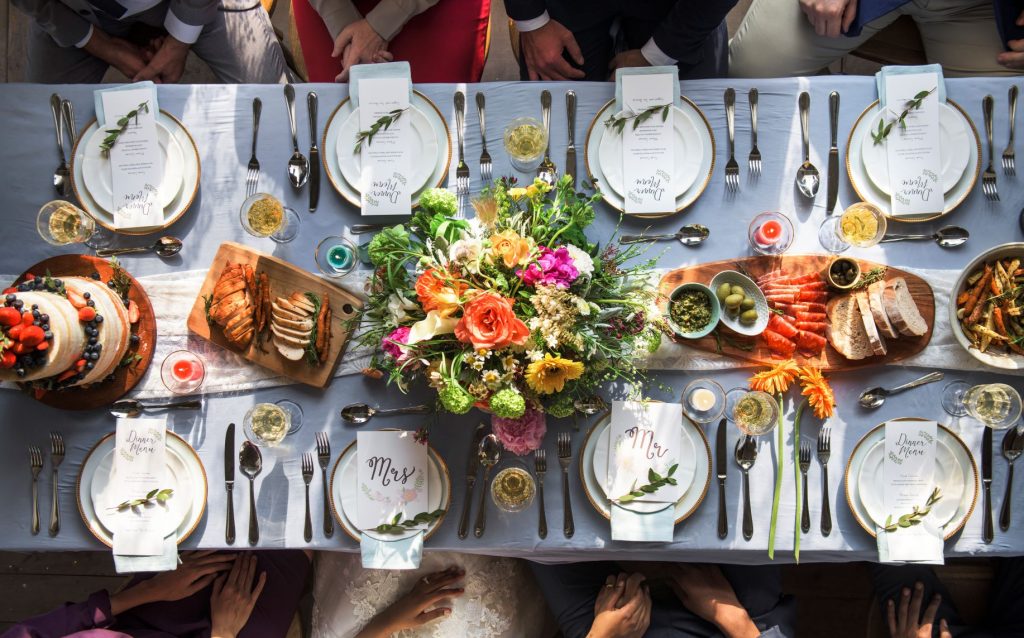
There are several things you need to do before you begin planning your wedding. The first step is to obtain a marriage license. This law is different from one state to the next, so it’s important that you research them before you go. You also need to obtain a license at the right time; some states have waiting periods after which they expire.
Budget for a minimalist wedding
Planning a minimalist wedding is one of the most affordable ways to celebrate your wedding. You can choose an all-white scheme or accent colors like coral, grass green, and espresso. You can also use flowers in small quantities to add drama to your decor. You can place an orchid centerpiece in a clear bowl or a group of white hydrangeas inside a square vase.
Another benefit of choosing a minimalist wedding style is that it does not require many decorations. It is important to keep your wedding theme in mind. Similarly, you should avoid placing too many candles on the tables. A simple choice like 20 candles instead of 50 can save you over half the cost of table hire.
Using minimalist wedding planning techniques can save you money and stress, so you can focus on the other aspects of the big day. Finding the right location for your ceremony is the first step to planning a minimalist wedding. If you want your ceremony to be more memorable, try picking a scenic location, where you can take advantage of free or almost-free facilities. You also have the option of choosing from mountains, barns, or rivers as wedding locations. If you feel it’s appropriate, you can even have your wedding in an old building.
The second step in planning a minimalist wedding is to decide on the items that are essential to create a memorable event. You’ll also be able to save money if you decide to do some DIY projects, but remember to keep the details simple.
Eco-friendly wedding ideas
You should incorporate eco-friendly ideas into your wedding planning. Floral centerpieces are a common choice, but they aren’t the most environmentally friendly option. You can use potted plants or flowers from your garden or patio instead. These can be used at home and re-planted whenever the time comes.
Many venues offer green-friendly amenities such as composting and recycling. To reduce emissions and traffic, you can have your wedding and reception at the same location. You can even opt for a shuttle service to transport your guests, reducing the amount of gas and car emissions. And don’t forget to use sustainable wedding dresses and a sustainable arch.
You can also opt for cloth napkins over disposable ones. They are better for the environment. Organic cotton, linen, and bamboo are the best fabrics. Natural wood elements can be used to create a Bohemian or rustic theme. You can also recycle or donate used wedding items.
You can also reduce the amount of food you consume. Vegetarian wedding meals use less resources, and natural wines support environmentally-conscious wine producers. In addition, using ingredients that are locally grown is also a good idea. It can have negative effects on the environment if food is shipped far away. You can also donate any leftover items from your wedding to a charity, thrift store, or give them to your guests.
You can also reduce your wedding’s carbon footprint if you choose eco-friendly favors. Succulents are a popular choice for decorations because they are easy to maintain. You don’t have to spend a lot on succulents. A zero-waste bamboo set of utensils can be used to encourage plastic reduction and recycling.
Creating a timeline
One of the most important aspects of wedding planning is creating a timeline. Whether your ceremony is held outdoors or indoors, it is essential to determine a starting time for your wedding. The ceremony and reception times will need to be planned. However, you can adjust the timeline to include important events. A typical wedding ceremony takes between 30 and 45 minutes. Make sure everyone has enough time to reach the ceremony.

Creating a timeline can be as simple as using a Google Doc or Word document. Or, you can use an editable template creator such as Canva. To create a timeline, first gather as much information as possible. If you’re hiring a hair- and makeup team, ask them for a timeline detailing their arrival and departure times. Once you have an idea of the timeframe for the morning, you can move onto the afternoon and evening.
Another way to create a timeline is to ask the help of your wedding planner. A sample timeline and a checklist of the things you need to do can be provided by your wedding planner. A timeline will help you plan your wedding without getting stressed. It also helps you avoid forgetting things and can help you stay organized.
Another benefit to creating a timeline is the ability to see the big picture. It is possible to add vendors and other details to your timeline. This will make it easier for you to plan and avoid surprises. You will need to create a timeline if you have a budget.
Guest list
It is important to keep track of all the guests at your wedding. This list will help you keep track of the number of guests, their address, RSVPs, and even any dietary restrictions. It is important to include their email addresses and phone numbers. This will make it easier to send thank you cards and follow-up with your guests after the wedding.
The list is also crucial for creating the seating chart. Color coding the list will make it easier to visualize who will sit where. You can also categorize your guests based on their relationship status and how many friends they have in common. However, there are other reasons to create a guest list.
Most couples will invite more people than they have room for. Often times, loved ones and friends will want to be invited to a dinner or a small party. If you had to cut someone off of your list, you would have to have a smaller wedding. This can be especially frustrating if you are trying to stick to a budget. Therefore, you should divide your list into A, B, and C lists.
Before making a guest list, you should sit down with your significant other or friends. This will prevent any misunderstandings or hurt feelings. A professional wedding planner can help you discuss the guest list. They can help you navigate difficult conversations that could lead to a bad decision.
Your parents’ opinions on the wedding will be included in your guest list. While it is important to respect your parents’ opinions, you should also establish a limit on how much input each person will provide. If you’re not used to managing your parents’ requests, you’ll likely end up with a never-ending stream of changes.
Contingency plans
Creating contingency plans is essential to the success of your wedding. Things don’t always go according to the plan. The last thing you want to do is run around trying to remember something important. Make a list of the most important items you need to remember and share it with someone trusted. A wedding checklist will ensure that you don’t forget anything critical.
Check the weather forecast. You certainly don’t want to be standing around in 95-degree heat to get married! Prepare a Plan B or C in case it rains. You’ll be more prepared and less stressed during the planning phase. Just as you wouldn’t want to lose your friends or family during the ceremony, you don’t want to get caught unprepared.
Communicate regularly. Make sure you and your staff know what your contingency plan is and how to execute it. Be sure that everyone has a copy of the plan and risk assessment. Keep copies of the plan and risk assessment in a shared area for team members to see. This will ensure that everyone is aware of what to do in an emergency.
Contingency plans for wedding planning should cover all types of weather conditions. When rain threatens, the top priority is to keep the client and guests dry. However, it’s important to remember that rain is unpredictably unpredictable, so it’s important to have a backup plan in case something goes wrong. An example: an outdoor wedding could be canceled by a severe storm, but an indoor venue might be able to host a ceremony on a more pleasant day.
In the event that the date changes, you will want to create a list of all the decisions you need to make. You may need to change the date of your wedding to affect your timeline and catering plans. In some cases, you’ll need to limit the participation of children or prioritize other guests. Some government policies may restrict the number of children-friendly guests.